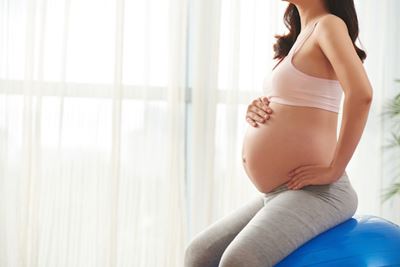Bed rest: When is it necessary?
There are many recommendations for pregnant women that have little scientific evidence to support them. For example, eating dry saltine crackers followed by a sip of water to prevent and treat morning sickness. Or playing classical music to soothe the unborn baby. Or not lifting one’s hands over their head to prevent umbilical cord entanglement. These are unproven recommendations, but have little risk and are inexpensive, so many pregnant women will embrace them during their 40 weeks of pregnancy.
Modern obstetricians are trained to practice “evidence-based medicine.” That means that a study will be performed to test a certain intervention’s effectiveness in treating or preventing a pregnancy condition, and if there is statistical confirmation that the intervention is helpful, then that intervention could become a standard of care.
Bed rest in pregnancy to prevent a premature delivery is an interesting topic, and although the data is not conclusive, I do have certain views on this topic.
The Cons of Being on Bed Rest
Increased risk of blood clots

First, could it be a risk? The answer is yes. We know that pregnancy changes a woman’s ability to coagulate blood. This occurs to help control the bleeding at, and after, delivery. When a pregnant or recently delivered woman is at bed rest, the blood in the deep veins in her legs can lose the flow pattern, and thus form a clot.
While this can be dangerous, there are things that can help prevent clotting. Many hospitals apply compression stockings to women who spend a long time at bed rest. Sometimes, they also receive a small shot of blood thinner daily. If the pregnant woman is on bed rest at home, she can help move the blood through her veins by frequently “wiggling” her legs and toes to activate her legs muscles. She can also slightly elevate her legs to help prevent clotting.
Bed rest can be expensive
A large number of pregnant women are employed, and if she goes on bed rest, she will inevitably have to leave work.
Lack of exercise
If a pregnant woman is on bed rest, she cannot exercise, which is proven to be helpful during pregnancy.
Decrease in social interaction
There are also social variables that could raise concern. The pregnant woman on bed rest is not engaging in her usual routine and could become bored, depressed and/or feel guilty.
Even though the evidence for bed rest in pregnancy to prevent a premature birth is controversial and there are risks, I personally believe there are certain times when prolonged bed rest may be beneficial and I recommend it at this time.
When Bed Rest may be Necessary
Incompetent Cervix
The process of a preterm birth is not unlike a term birth, it just happens earlier. The mouth of the womb (cervix) softens, opens and flips upward, the uterus begins to harden rhythmically (contract) and the lower part of the uterus thins. There is very little we can do about the softening process with the exception of inserting a suture (shaped like a shoestring) around the cervix at 13 weeks. Of course, we have to know the cervix will soften before it actually softens and dilates. That is where the patient’s past history becomes important. If she has previously delivered a baby early the doctor will ask specific questions and possibly perform cervical length measurements. The condition that we are looking for is called “incompetent cervix.”
Prevent abnormal/increased contractions

The other part of delivering a baby that occurs after and simultaneously with the softening and dilating of the cervix is the contractions. Every pregnant woman contracts throughout the second and third trimester, which is normal. It is not normal, however, if the cervix is already dilated, or the contractions are persistent. This is where bed rest along with adequate hydration, in my opinion, is beneficial. Most pregnant women will tell you that if she is active during the last several months, she will begin to contract much more frequently in the evening. That is why most obstetrical triages become busy around 10:00 pm. My theory is that the skeletal muscles that are in use during the daytime activity are actually “borrowing” oxygen, and that the placenta is reclaiming that oxygen later that day by using the contractions. The placenta is like a sponge, and when the uterus contracts, it is essentially squeezing the placenta. This process is a lot like when you wash your car using a big sponge and then squeeze it to get out the “used and dirty water.” The uterus is squeezing out the old blood and is quickly replacing it with new, well-oxygenated blood. These contractions will stop as suddenly as they start, regardless of what anyone does, and are what we call “false labor.” This is where bed rest can be useful.
Pregnant women who already have a softened cervix should contract as little as possible. These include women with an incompetent cervix, or women who may have what is called a “fusion defect” of their uterus that could cause the cervix to be weak. Also, many women who are carrying twins or triplets may have a cervix at risk for early dilation.
Added protection
Another benefit of bed rest is that women can’t trip, fall and hit their uterus if she is in bed. Hitting the uterus can frequently result in breaking the placenta off (abruption).
Decreased risk for high blood pressure
Also, many pregnant women develop high blood pressure during the late second and early third trimester, and bed rest can help prolong these pregnancies safely.
Early water break
Finally, some women will break their water early, and modified bed rest in the hospital may be recommended.
If you have any questions concerning bed rest, don’t hesitate to ask your OB/GYN.







